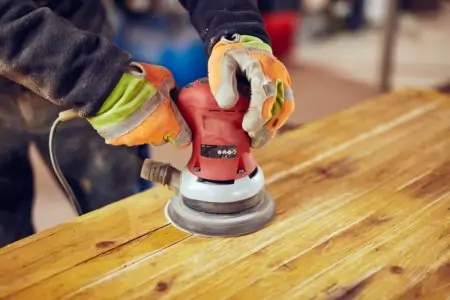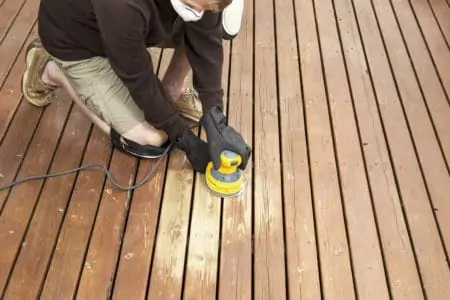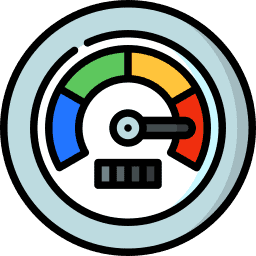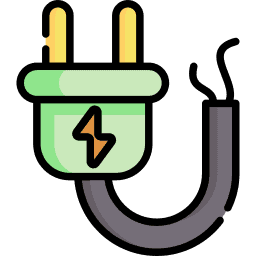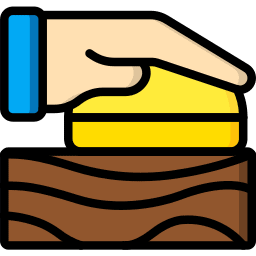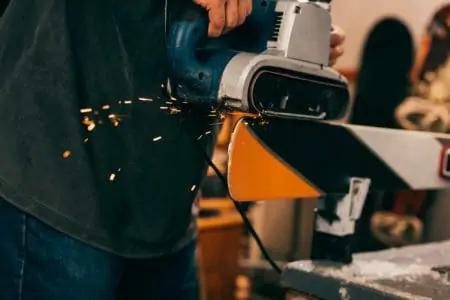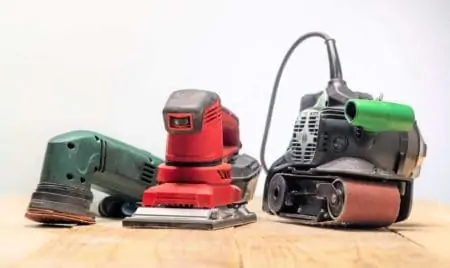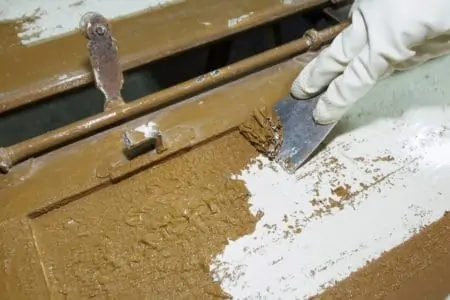If you are looking to purchase a random orbital sander and don’t know where to start, this is the article for you.
We give you the lowdown on the best random orbital sanders, informing you why they are so good and what features and benefits they have.
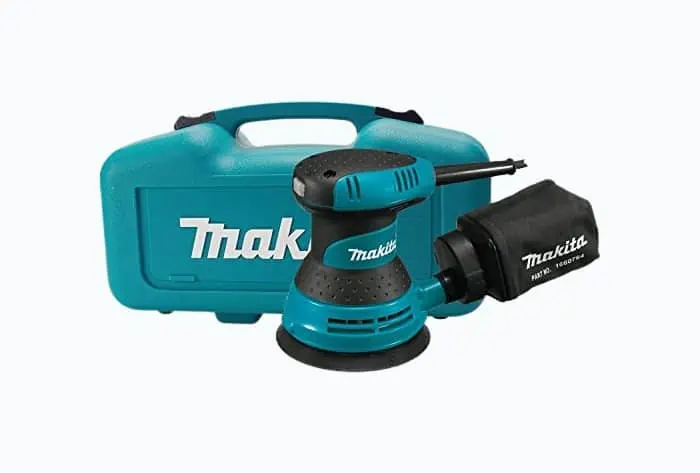
- 12,000 OPM
- 3-amp motor
- 1.25-inch orbit action
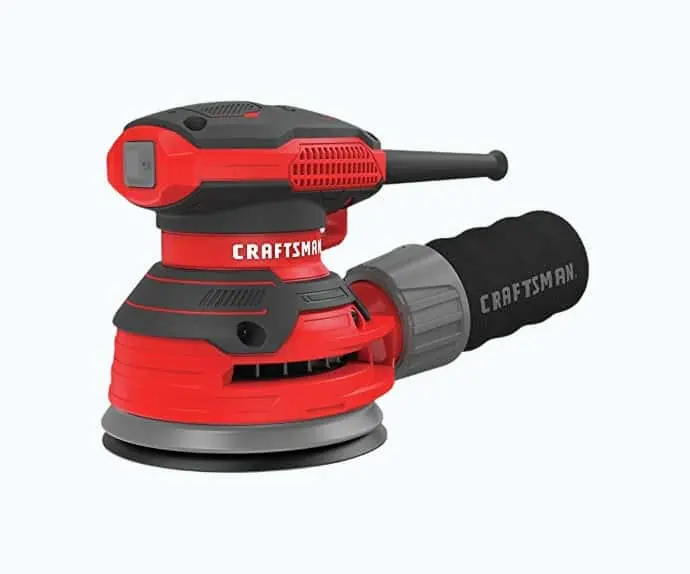
- Has vacuum hose connector
- Sealed power switch
- 3-year warranty
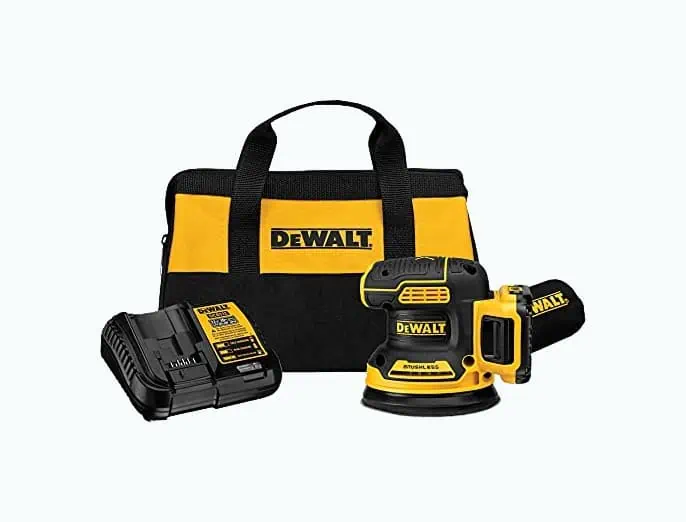
- Brushless motor
- Variable speed control
- Cordless tool
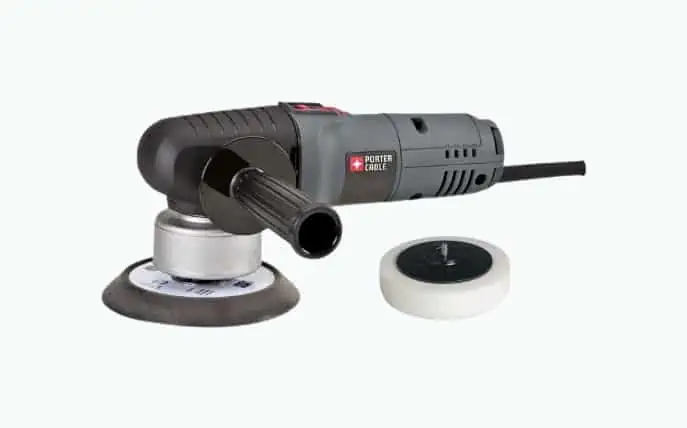
- 4.5-Amp motor
- Maximum 6,800 OPM
- Detachable side handle
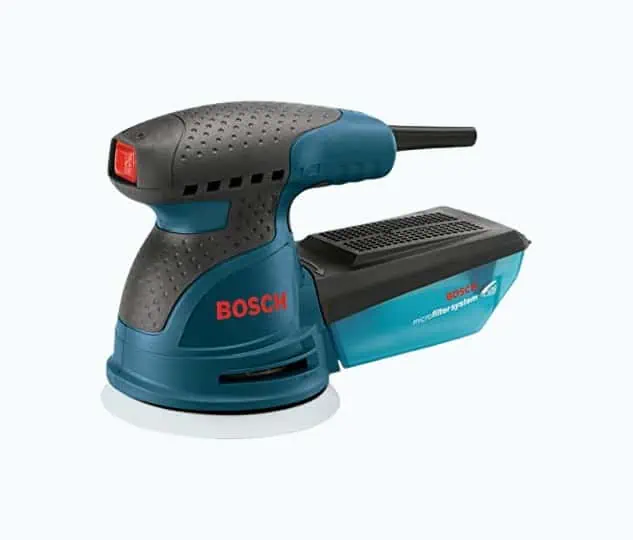
- Only weighs 3.5 lbs
- Impressive 12,000 OPM
- Integral pad dampening system
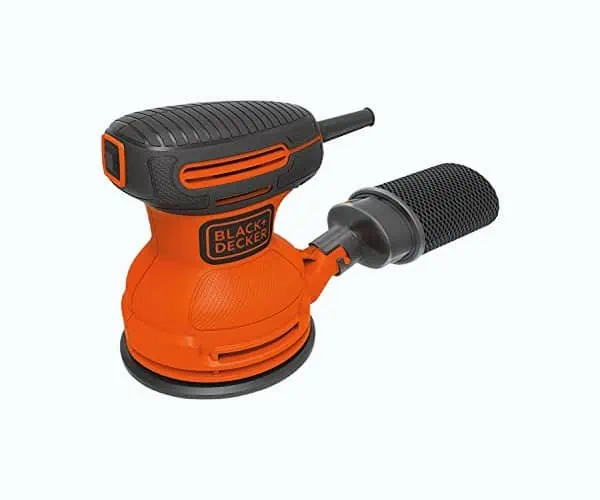
- Has a dust collection bag
- Great value for money
- Lightweight at 3.15 lbs
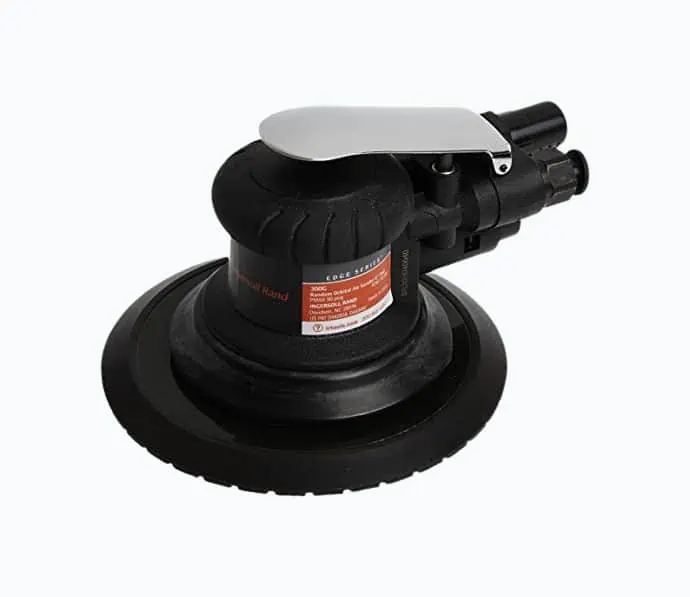
- Central vacuum dust control
- Swirl-free finish
- Only weighs 2.75 lbs
Review Methodology: At Sensible Digs, we pride ourselves on our thorough analysis and hands-on evaluation of products, specifically in the realm of the best random orbital sanders. Our professional team applies rigorous criteria and tests to ensure the quality of our reviews. We measure and track each product’s performance, compare them against industry standards, and rank them based on the results. We delve into the unique design choices, providing you with facts about what sets each product apart. We assess key factors such as power, speed, comfort, and dust collection, to help you make an informed decision. Our reviews and findings are based on our experience and solid evidence, making Sensible Digs your reliable source for professional, user-centric reviews.
The Best Random Orbital Sanders of 2024
Random orbital sanders come in all makes and models, with differing performance levels. Getting the one that’s right for you is a challenge. Here are our top 7 models.
Makita 5-Inch Random Orbital Sander
Best Random Orbital Sander for Cars
This Makita sander has a 3-amp motor that generates 12,000 OPM, and thanks to the rubberized grip, it is easy to control. The 5-inch pad is excellent at delivering ultra-smooth results, which is ideal for car body shops, where detail matters.
The sander base has 8 portals that suck away the dust and collect it into a bag that attaches to the exhaust system. The on/off switch is handily placed for one-handed control, and the unit has an oversized ball bearing for longevity and increased ruggedness.
Makita products are respected across the globe, and this random orbital sander is no exception.
What We Like
Efficient Dust Collection
The sander base contains 8 suction holes that draw away the dust as you sand, depositing it into a handily placed collection bag.
3-Amp Motor
The motor is powerful enough to generate 12,000 orbits per minute to deliver fast and efficient material removal that makes working with car paintwork possible.
1.25-Inch Orbit
Not only does the sanding pad rotate, but it also orbits using a 1.25-inch random action. It ensures that polishing car paintwork is a breeze and you get the best results.
What We Don't Like
Case Costs Extra
If you want the hard-wearing carry case, it is an extra expense. You don’t have to have it, but the tool would be better protected when you take it on the road.
Product Specs
| Weight (pounds) | 2.87 |
| Dimensions (inches) | 15 x 7x 10 |
| OPM/RPM | 12,000 OPM |
| Amps | 3 |
| Size of pad (inches) | 5 |
| Price | $$$ |
| Warranty | 1-year |
Our Ratings
User Experience
CRAFTSMAN Random Orbital Sander
Best Random Orbital Sander With Dust Collection
This CRAFTSMAN matches the Makita for power and speed, generating 12,000 OPM from a 3-amp motor. This is the best dust collection random orbital sander thanks to the hose connection that allows you to extract the dust through a dry vacuum system.
It ensures the total removal of harmful pollutants. If you don’t want to use the vacuum, it comes with a dust bag that easily clips onto the tool’s exhaust. This model has a sealed power switch to stop dust from getting into the electronics.
The pad size is 5 inches, and it comes with a 3-year warranty that knocks spots off the Makita warranty.
What We Like
Vacuum Hose Connector
Keeping you safe from dust and debris is paramount if you want to avoid lung problems further down the line. Connecting your sander to an extraction vacuum removes the dangers and keeps you safe.
3-Year Warranty
The length of the warranty is a great indicator of the manufacturer’s confidence in its product. This CRAFTSMAN comes with a 3-year warranty, giving you ample, hassle-free sanding and polishing.
Great Price
This random orbital sander is cheaper than the Makita, even though it matches it for performance. It makes this model incredible value for money.
What We Don't Like
One Speed
This model only comes with one speed, meaning you cannot increase or decrease the tempo to cater to different materials.
Product Specs
| Weight (pounds) | 3.5 |
| Dimensions (inches) | 10.13 x 5.5 x 5.75 |
| OPM/RPM | 12,000 OPM |
| Amps | 3 |
| Size of pad (inches) | 5 |
| Price | $$ |
| Warranty | 3-year |
Our Ratings
Personal Perspective
DeWALT 20V MAX Random Orbital Sander
Best Cordless Random Orbital Sander
If you are looking for a cordless random orbital sander, this DeWALT is an excellent choice. It has a maximum of 20 volts and variable speed control that ranges from 8,000 to 12,000 orbits per minute, so you don’t suffer a lack of power from not being plugged in. This is thanks to the 2 amp-hour lithium-ion battery.
Like the CRAFTSMAN, you can attach this sander to a dust extraction vacuum to completely remove all the dust. The pad is 5 inches, the grip is rubberized for increased grip and control, and you also get a sealed on/off switch.
This pack comes with a carry bag and a charging port for the battery, plus a dust bag.
What We Like
Brushless Motor
Brushless motors are the latest in motor technology. They are so efficient, they increase the runtime of your lithium battery considerably. It all adds up to completing your projects faster and more efficiently.
Vacuum Hose Connector
The 1.25-inch hose connector enables you to hook up to a dry vacuum system to extract all the dangerous dust particles. Dust extraction is a key safety feature of any orbital sander.
Cordless Convenience
What could be more convenient than connecting the battery and getting started right away? There is no need to mess about with power cables or extension cords. Plus, you can take this tool anywhere, and it will still work.
Quality Brand
Everyone loves DeWALT products. They are an American success story, famed across the world for quality and performance.
What We Don't Like
Super-Expensive
While this is a quality tool, you cannot escape the fact that it is super-expensive compared to some. This model costs over 4 times the price of others on the list.
Product Specs
| Weight (pounds) | 4.8 |
| Dimensions (inches) | 11.54 x 10.12 x 5.75 |
| OPM/RPM | 12,000 OPM |
| Amps | 20 volts (Cordless tools are rated in voltage) |
| Size of pad (inches) | 5 |
| Price | $$$$$ |
| Warranty | 3-year |
Our Ratings
Community Feedback
Porter-Cable Random Orbital Sander
Best Random Orbital Sander for Decks
When you have a major project to complete, like laying garden decking, this Porter-Cable sander is a real winner. When sanding wood, sometimes it’s better to have a more powerful motor and a lower OPM.
This model has a 4.5-amp motor, making it one of the most powerful, but the OPM only reaches a maximum of 6,800. It also has variable speed, so you can switch between surfaces and materials.
The other great addition to this sander when fitting decking is the detachable side handle that gives you greater purchase and control. On the downside, Porter-Cable class this as a lightweight model, but comparing it to others in its class, this sander is heavy at 6 pounds.
This sander also comes with a polishing disc and a 6-inch sanding pad, making it the ideal tool to cover large areas.
What We Like
Powerful Motor
This Porter-Cable comes with a powerful 4.5-amp motor that ensures you get all the grunt you need. While it isn’t the fastest, it gives you increased torque.
Variable Speed
You wouldn’t drive your car at one speed only, so why would you accept it when sanding? Changing speeds increases your versatility and the range of materials you can work on.
Detachable Side Handle
The handle increases your grip and control when applying the sander to heavy-duty applications like laying decking. It also improves the sander’s balance.
What We Don't Like
Weighs 6 Pounds
Compared to other random orbital sanders, this model is heavier than most at 6 pounds despite the claims that it is lightweight.
Product Specs
| Weight (pounds) | 6 |
| Dimensions (inches) | 11.5 x 10.5 x 6 |
| OPM/RPM | 6,800 OPM |
| Amps | 4.5 |
| Size of pad (inches) | 6 |
| Price | $$$$ |
| Warranty | 3-year |
Our Ratings
First-Hand Impression
Bosch Variable Speed Random Orbital Sander
Best Random Orbital Sander for Woodworking
Bosch has been making quality power tools for decades, so it is only right that we feature one in our review. This model is small and compact, making it an ideal sander for carpenters and cabinet makers.
The 2.5-amp motor may not be the most powerful, but when you are working with wood, precision and efficiency are the key ingredients. It has a no-load OPM of 12,000, but thanks to the variable speed, you can drop this to 7,500.
This Bosch is designed to eliminate swirl marks on the wood, thanks to a unique integral pad dampening system. Plus, you can attach this to a dry vacuum system to extract the dust. If you choose the bag collector, it traps particles as small as 0.50 inches in diameter.
What We Like
Small Motor, Big OPM
Even though this sander has a 2.5-amp motor, it still generates an impressive 12,000 OPM. That rivals some of the larger sanders like the Porter-Cable with a 4.5-amp motor.
Variable Speed
Variable speed gives you greater control, which is vital if you are a cabinet maker. Changing the speed to match different surfaces and levels of detail ensures a smoother outcome.
Lightweight and Compact
This sander only weighs 3.5 pounds, which is just under half the weight of the Porter-Cable. It’s ideal if you work for long periods and want to reduce hand fatigue.
What We Don't Like
Lacks Power
Beyond woodworking and cabinet making, this little sander might struggle to take on heavier tasks. You certainly wouldn’t want to sand an entire floor with this thing. It would take some time.
Product Specs
| Weight (pounds) | 3.5 |
| Dimensions (inches) | 9 x 5 x 6 |
| OPM/RPM | 12,000 OPM |
| Amps | 2.5 |
| Size of pad (inches) | 5 |
| Price | $$ |
| Warranty | 1-year |
Our Ratings
User Experience
Black and Decker 5-Inch Random Orbital Sander
Best Budget Random Orbital Sander
If it’s value for money you want, then this Black and Decker orbital sander takes the prize. You can buy 5 of these and still spend less than one DeWALT cordless model. And just because it’s cheap doesn’t mean it won’t perform.
The motor is 2 amps and generates 12,000 OPM, so while the power may be lacking, it still reaches speeds to rival others. This is a lightweight and compact model, weighing just 3.15 pounds.
The on/off switch is also sealed to avoid any dust getting in, and the dust collection system ensures pollutants stay at bay.
What We Like
Budget Price
You cannot deny that this sander is cheap. It costs a fraction of most to make the list, making it ideal for a beginner.
Dust Collection Bag
Removing and storing the dust in an easy-to-reach bag helps keep you safe by removing most of the dust from the atmosphere.
Lightweight and Compact
This sander only weighs 3.15 pounds, which is even lighter than the Bosch model. Reducing strain on your hands and wrists is vital if you want to keep working for longer.
What We Don't Like
Lacks Power
This Black and Decker only has a 2-amp motor, meaning that industrial-strength tasks like floor laying and decking are beyond its capabilities. This orbital sander is better suited to lighter tasks.
Product Specs
| Weight (pounds) | 3.15 |
| Dimensions (inches) | 7 x 5 x 6 |
| OPM/RPM | 12,000 OPM |
| Amps | 2 |
| Size of pad (inches) | 5 |
| Price | $ |
| Warranty | 2-year limited |
Our Ratings
Personal Perspective
Ingersoll Rand 300G 6-Inch Random Orbital Sander
Best Pneumatic Random Orbital Sander
When it comes to air tools, Ingersoll Rand is world-class. This pneumatic orbital sander delivers efficient performance via compressed air. Thanks to the unique design, you can achieve a swirl-free finish on metal and wood.
It is lightweight, weighing just 2.75 pounds, which gives you the freedom to work for extended periods. The only downside to an air orbital sander is that you need an air compressor, and they don’t come cheap.
Expect to add a sizable chunk of money to your budget. Plus, air compressors make the air tool less transportable because wherever you go, you need to drag the compressor.
What We Like
Vacuum Dust Control
This sander connects to a central dust extraction system, removing all traces of harmful particles. It keeps you safe and your lungs free of contaminants.
Super-Lightweight
This air tool has few rivals when it comes to weight. At just 2.75 pounds, you can keep working for longer because your hands and wrists get placed under less strain.
Perfect for Heavy-Duty Tasks
If you have a substantial project on the go, like decking or flooring, this pneumatic sander has a 6-inch pad to cover greater surface areas more efficiently.
What We Don't Like
Requires a Compressor
Always factor in the air compressor when shopping for an air sander. If you already have one, check it is compatible with this tool because if not, you will have to spend many dollars getting a new air compressor.
Product Specs
| Weight (pounds) | 2.75 |
| Dimensions (inches) | 8 x 6.5 x 4.75 |
| OPM/RPM | Not stated |
| Amps | N/A (Motor is 1.5 horsepower) |
| Size of pad (inches) | 6 |
| Price | $$$ |
| Warranty | 1-year limited |
Our Ratings
Community Feedback
| Product | Best | Weight | Dimensions | OPM/RPM | Amps | Size of pad | Warranty |
|---|---|---|---|---|---|---|---|
| Makita Random Orbital Sander | Cars | 3 lbs | 15 x 7x 10″ | 12,000 OPM | 3 | 5″ | 1-year |
| CRAFTSMAN Random Orbital Sander | Dust Collection | 4 lbs | 10.13 x 5.5 x 5.75″ | 12,000 OPM | 3 | 5″ | 3-year |
| DeWALT Random Orbital Sander | Cordless | 5 lbs | 11.54 x 10.12 x 5.75″ | 12,000 OPM | N/A | 5″ | 3-year |
| Porter-Cable Random Orbital Sander | Decks | 6 lbs | 11.5 x 10.5 x 6″ | 6,800 OPM | 4.5 | 6″ | 3-year |
| Bosch Variable Speed Sander | Woodworking | 4 lbs | 9 x 5 x 6″ | 12,000 OPM | 2.5 | 5″ | 1-year |
| Black+Decker Random Orbital Sander | Budget pick | 3.15 lbs | 7 x 5 x 6″ | 12,000 OPM | 2 | 5″ | 2-year limited |
| Ingersoll Rand Random Orbital Sander | Pneumatic | 3 lbs | 8 x 6.5 x 4.75″ | N/A | N/A | 6″ | 1-year limited |
What Do You Use a Random Orbital Sander For?
Random orbital sanders are used to sand and smooth a variety of surfaces and materials. They can shape, polish, and remove rust. They are effective on wood, metal, plastic, sheet material, and non-ferrous metals.
Random orbital sanders are loved by hobbyists, woodworkers, professionals, and contractors. They have even found a home in auto repair shops and garages across the land.
How To Choose the Best Random Orbital Sander?
Before you look at the specifics of a random orbital sander, first decide how you will use it.
Random Orbital Sander FAQs
We’ve Come Full Orbit
We know how useful random orbital sanders are and how effective they are at sanding and polishing metal, wood, rust, and non-ferrous metals. Using an orbital sander saves you time and increases your efficiency.
If you have a flooring project coming up, or want to buff the paintwork on your car, what are you waiting for? Get a random orbital sander in your life ASAP!
